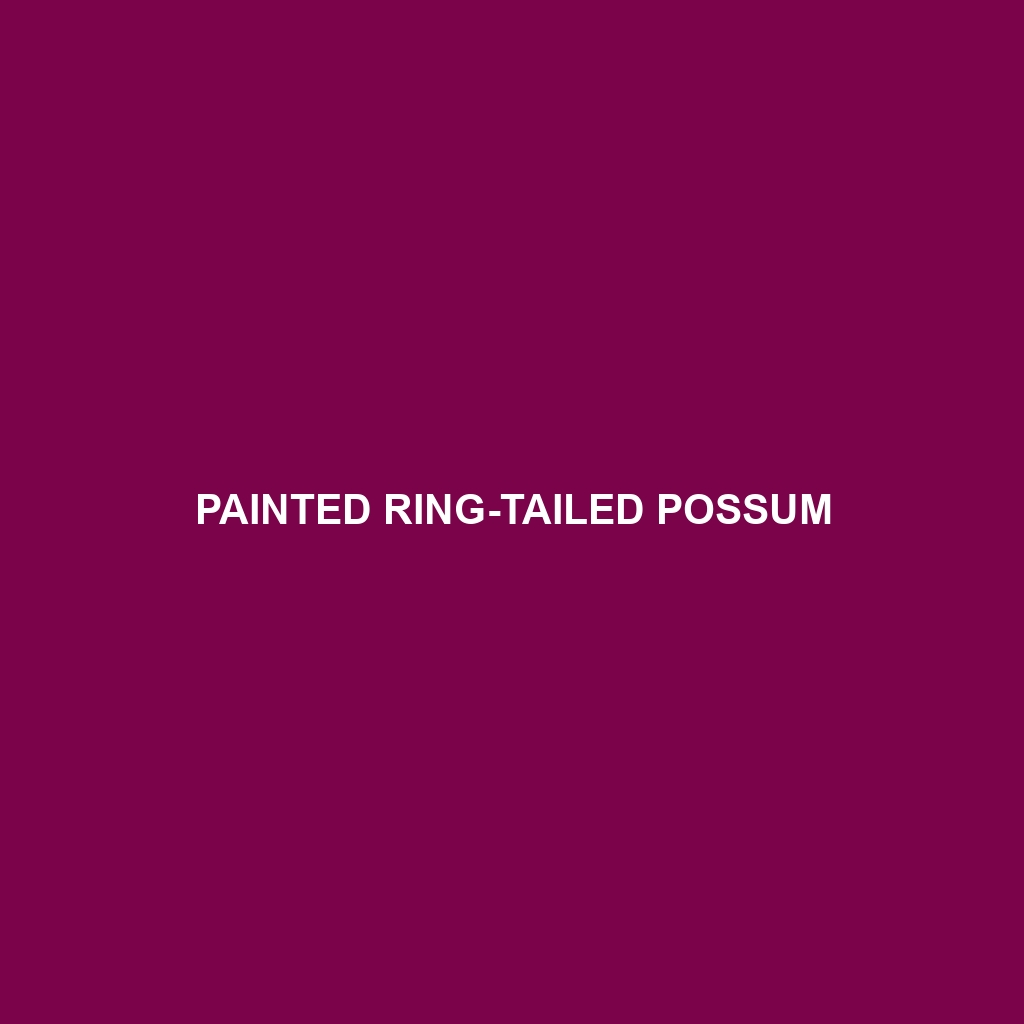Painted Ring-tailed Possum: A Detailed Description
The Painted Ring-tailed Possum (Pseudochirulus forbesi), a striking and relatively rare marsupial, is best known for its vibrant, intricate coat patterns and adept arboreal lifestyle. Endemic to the rainforests of New Guinea, this possum is a fascinating blend of beauty and ecological significance.
Physical Characteristics:
Size:
Length: Adults typically measure between 30 to 40 cm (12 to 16 inches) in body length, with an equally long, prehensile tail that adds another 30 to 40 cm.
Weight: They generally weigh between 1.5 to 2 kg (3.3 to 4.4 lbs).
Coloration:
The Painted Ring-tailed Possum’s fur is a striking mix of colors. Their back is adorned with shades of gray, brown, and white, often forming intricate, almost painterly patterns that give this animal its name. The underside is usually a lighter, creamy color.
They possess a distinctive facial mask with dark rings around their eyes and a contrasting white stripe running down the bridge of their nose.
Special Features:
One of their most notable features is their prehensile tail, which is not only long but also highly flexible and muscular, allowing them to grasp branches and navigate the treetops with ease.
They have sharp claws and padded feet that further aid in climbing.
Behaviors:
Social Interactions:
Painted Ring-tailed Possums are generally solitary but can sometimes be seen in pairs, particularly during the mating season.
They communicate through a series of vocalizations, including hisses, chatters, and clicks, which serve to establish territory and attract mates.
Feeding Habits:
These possums are primarily folivorous, feeding on a variety of leaves, flowers, and fruits. Their strong, specialized teeth allow them to chew through tough vegetation.
They play a crucial role in seed dispersal, aiding in the propagation of various plant species within their habitat.
Ecological Roles:
As both herbivores and seed dispersers, Painted Ring-tailed Possums are integral to maintaining the health and diversity of their rainforest ecosystem.
Their feeding habits help shape the vegetation structure, which in turn supports various other wildlife species.
Habitats:
Native Habitat:
Painted Ring-tailed Possums inhabit the dense, tropical rainforests of New Guinea, primarily at elevations ranging from 500 to 2000 meters.
They prefer areas with abundant foliage and a complex canopy structure, which provides ample food sources and shelter.
Adaptations:
Their prehensile tail and sharp claws are key adaptations for an arboreal lifestyle, enabling them to navigate and thrive in the forest canopy.
Their keen sense of smell and night vision are crucial for locating food and avoiding predators during their nocturnal activities.
Conservation Status:
Current Status:
The Painted Ring-tailed Possum is currently listed as Near Threatened on the IUCN Red List due to habitat loss and fragmentation caused by logging and agricultural expansion.
Conservation efforts are focused on protecting their natural habitats and ensuring sustainable forest management practices.
Fascinating Fun Facts:
Painted Ring-tailed Possums have a unique grooming behavior where they use their forepaws to clean their fur meticulously, often spending several hours a day on this activity.
These possums have a relatively low reproductive rate, with females typically giving birth to only one or two offspring at a time, which they carry in their pouch until the young are ready to emerge.
The vibrant and varied coat patterns of individuals have led to the nickname “living artwork” among some local communities and researchers.
In conclusion, the Painted Ring-tailed Possum is a remarkable species, both in its aesthetic appeal and ecological importance. With ongoing conservation efforts, we can hope to preserve this captivating creature and the vital role it plays in its rainforest home.
